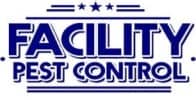Mandatory Checklist For Successful Bed Bug Treatment
- Remove all clothing and personal items from dressers, nightstands and storage areas.
- Place any items that cannot be laundered in airtight bags or containers
- Mattress and box spring should be separated and stood on end so that frame and all pieces are accessible to be sprayed
- All bedding, sheets and clothing should be washed and or dried on high heat for at least 30 mins. Do not return items to the room until after the treatment is complete. Any items that cannot be laundered should be placed in airtight bags or containers.
- Clean affected area of all trash and debris
- Baseboards should be accessible to be sprayed
**Mattress protectors will need to be installed during the appointment and are not provided by Facility Pest Control. They can be purchased at Wal-Mart or Bed Bath and Beyond and should be purchased prior to the appointment.**
Other Things To Never Overlook Before And After Treatment
- Investigate bed bug infestation right after you see the signs. Locate areas with the highest level of infestations and target those areas first.
- Immediately isolate from the infested room.
- Disinfecting and sanitizing the entire room is another step to preventing infestations.
- Routine cleaning of the carpets and rugs using a vacuum cleaner is highly recommended. After each use, make sure to empty the vacuum. Seal the bag as firmly as possible and discard it promptly in an outdoor garbage can.
- Enclosing the mattress and box springs in a dust mite-proof cover before any treatment can help prevent bed bugs’ movement and spread.
- Monitoring areas like cracks and crevices is quite essential for bed bug treatment.
- Exterminate –choose the proper treatment since they can come in many forms, such as heat, chemical applications, or other methods that your exterminator decides to use, depending on the situation. Be sure to ask many questions so you are fully informed about the techniques used in your facility.
- Discard – Some items cannot be treated and should be discarded immediately after being identified by the pest management professional.
- Inspect for bed bugs at least once every seven days to see whether eggs have survived. Interceptors, traps, and other monitoring devices can be used. Interceptors are placed beneath furniture legs to catch bed bugs and prevent them from climbing the legs.
- Be proactive. Call a professional pest control company to combat and help you with your bed bug problem.
- Make arrangements for follow-up treatment as well as an inspection.
Scheduling a monthly inspection is the first step to successful bed bug treatment. Bed Bugs are growing nationwide at an alarming rate. Their tiny size allows them to hitchhike their way into any establishment, including hotels, hospitals, colleges, apartments, etc. With the increase of bed bugs comes terrible publicity for those who unknowingly provide them with a place to infest. Contact a professional company like Facility Pest Control to inspect your infected room. Our experienced team will work with you to detect bed bugs as soon as they emerge and implement a treatment plan that will eliminate the problem quickly with minimal disruption.
Bed Bug Treatment Preparation Instructions - FAQs
Examine the fabric of your clothes in your closet or laundry room for signs of bed bugs. If you suspect a severe infestation, cover the floor with a white sheet. Then shake clothes out of baskets or the closet over the sheet. Examine the sheet for signs of bed bugs, excrement, or eggs. We at Facility Pest Control can assist you in detecting and controlling bed bugs.
Your home may become too hot and uncomfortable within hours of heat treatment. As a general rule, you can vacuum as soon as you are permitted to clean your home by professionals. Spray treatments may require three to four hours before returning home.
The short answer is that if you had a professional treatment and it has been three weeks since the end of the treatment with no signs of continuing infestation (i.e., bites, live bugs, new fecal matter, or cast skins), your bed bug infestation is likely to be controlled. The problem is that the true answer may be more complicated than this because of a number of complicating factors such as:
- The original infestation’s size
- The treatment’s method and its thoroughness
- The type of house
A bed bug is unlikely to travel on you or the clothes you are wearing. You move too quickly to be a good hiding spot. Luggage, backpacks, briefcases, mattresses, and used furniture are more likely to carry bed bugs.
